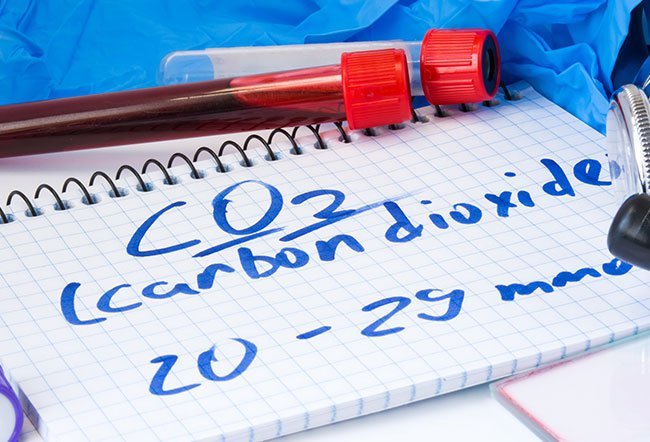What Causes Hypercapnia?

Hypercapnia refers to the accumulation of carbon dioxide (CO2) in the blood. There are various causes of hypercapnia such as:
- Brainstem disease
- Encephalitis (inflammation of the brain)
- Hypothermia (a low body temperature, which is a medical emergency that occurs when your body loses heat faster)
- Metabolic disorders, including:
- Nervous system disorders such as congenital central alveolar hypoventilation (a disease that affects normal breathing)
- Obesity
- Sedative overdose
- Sleep apnea (a potentially serious sleep disorder in which breathing repeatedly stops and starts)
- Spinal cord injuries or disorders such as:
- Guillain-Barre syndrome (a rare disease in which your body immune’s system attacks your nerves)
- Myasthenia gravis (a neuromuscular disorder that causes weakness in the skeletal muscle)
- Muscular dystrophy (a genetic disease that damages and weakens your muscles over time)
- Starvation
- Stroke
- Thoracic cage disorders such as:
- Flail chest (a life-threatening medical condition that occurs when a segment of the rib cage breaks and gets detached from the rest of the chest wall)
- Ankylosing spondylitis (a rare type of arthritis that causes pain and stiffness in your spine)
- Toxins, poisonings, and drugs such as botulism and tetanus
- Upper airway disorders
Hypercapnia can occur during anesthetic and post-anesthetic care that includes:
- Hypoventilation: Inadequate ventilation causes hypercapnia.
- Rebreathing: Faulty breathing circuits can cause rebreathing of the exhaled air leading to increased CO2.
- Increased CO2 production: In some cases, the body can produce excessive CO2.
- Increased dead space: Dead space is the volume of breath that doesn’t participate in the gas exchange. It is negligible in a healthy, awake person.
What is hypercapnia?
Normally, when you breathe, you take in oxygen and produce carbon dioxide (CO2) as a waste product. The blood takes the oxygen from the lungs to the tissues. It also transports CO2 from the tissues to the lungs from where it is exhaled or breathed out. Hypercapnia is an elevation of CO2 in your bloodstream. It is mainly seen in people with chronic obstructive pulmonary disease (COPD). In hypercapnia, the pH of the blood changes, making it too acidic. Hypercapnia may develop slowly or suddenly. If hypercapnia occurs gradually, the body compensates by making the kidneys work harder. Your kidneys release and reabsorb bicarbonate to keep your blood’s pH balanced.
A sudden increase in CO2 can affect the kidney because it cannot handle the spike.
What are the symptoms of hypercapnia?
The symptoms of hypercapnia depend on the severity of the condition:
- Mild to moderate hypercapnia:
- Anxiety
- Shortness of breath
- Daytime lethargy
- Headache
- Hypersomnolence (daytime sleepiness even when you slept a lot at night)
- Acute hypercapnia:
- Delirium (serious disturbance in mental abilities, resulting in confused thinking and reduced awareness)
- Paranoia (a thought process that causes you to have an irrational suspicion or mistrust of others)
- Depression
- Confusion
- Coma (if left untreated)
- Severe hypercapnia:
- Asterixis (hand tremors)
- Myoclonus (sudden, brief muscle jerks)
- Seizures
- Papilledema (increased pressure in your brain causing swelling of the optic nerve) can lead to the following:
- Varicose veins
How is hypercapnia treated?
The main aim of the hypercapnia treatment involves reversing the underlying cause. Treatment is also focused on achieving the normal blood levels of oxygen and carbon dioxide (CO2) through
- Noninvasive ventilation.
- Mechanical ventilation.
- Extracorporeal CO2 removal.
